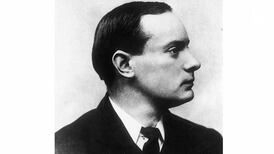The “October Surprise” is an infamous feature of US presidential elections: an accident or ambush so late in the campaign that the candidate on the receiving end has no time to recover. But 100 years ago this week, there was a classic British version of the phenomenon.
The 1924 general election, in which the first-ever Labour government sought a second term, was scheduled for October 29th.
It was the third election in two years and the incumbents, only 10 months in office and already a minority, might well have lost anyway.
Then, four days before polling, the Daily Mail newspaper published the “Zinoviev Letter”, and Labour’s fate was sealed.
Far away, so close – Fionnuala Ward on measuring distance
The Derry man who influenced George Washington and Alexander Hamilton - Brian Maye on Hercules Mulligan
The BBC’s national question: Frank McNally on Edna O’Brien and ‘the North of Ireland’
Dictionary on the Double – Frank McNally on the enduring literary life of Patrick Dinneen
Ostensibly signed by Grigory Zinoviev, chairman of the Communist International (Comintern), it purported to be a directive to the British Communist Party urging seditious activities that, combined with Labour’s policy of normalising British-Soviet relations, would incite the working class to revolution.
Like Richard Pigot’s notorious creation of 40 years earlier, published by the London Times to undermine Parnell, this too was a forgery (or so most scholars believe).
But despite immediate denials by Zinoviev, it passed for truth – trumpeted by the other right-wing newspapers – long enough to help sweep the Conservatives back into power.
How decisive it really was is still debated. The Labour vote more than held up and the Tories gained mainly at the expense of the old Liberal party, whose demise was collateral damage from the affair.
One school of opinion argues that, by giving Labour an egregious excuse for a defeat that might have happened anyway, the scandal’s greatest legacy was to prevent them learning the right lessons and undertaking necessary reforms.
In any case, the Tories won a landslide under Stanley Baldwin, prime minster for the next five years. Another winner was Winston Churchill who, having campaigned as an independent, returned to the Conservatives as chancellor of the exchequer.
There was a small Irish subplot too, because despite becoming an eponym, Zinoviev was not the only name on the letter. Another supposed signatory was Arthur McManus (1889 –1927), a Belfast-born Scottish trade unionist who had become Comintern’s colonial secretary.
McManus was later imprisoned for incitement to mutiny. He re-emerged to attend the inaugural meeting of the League against Imperialism and Colonial Oppression in 1927, before dying later that year aged only 38.
His ashes are among those in the Kremlin Wall Necropolis.
There was also an Irish-sounding subplot in the scandal, thanks to Sidney Reilly, aka “Reilly Ace of Spies”: the real-life espionage agent who became a model for James Bond.
There was nothing Irish about Reilly, really. Born under the surname Rosenblum, probably in Odessa, he borrowed his fake ID from one of his several wives, widow Margaret Thomas, who had been a Reilly before marriage.
Under the new guise, he posed variously as an Irish clergyman or the son of an Irish sea merchant, and claimed to have been born in Clonmel. Explaining his choice of pseudonym once, he said: “In Europe, only the British hate the Irish, but everyone hates the Jews.”
Complicating the story further is that one of Reilly’s many affairs was with Ethel Voynich (1864–1960), a woman who does not sound at all Irish but – by birth at least – was.
Born in Cork as Ethel Boole – daughter of the great English mathematician George Boole, then a professor in the forerunner of UCC – Voynich may be the most successful Irish-born writer that nobody in Ireland has ever heard of.
Her 1897 novel The Gadfly became a favourite of the Bolsheviks and required reading in the USSR, where it sold millions. Which is ironic, because it was partly inspired by Reilly, her lover at the time, whom the Russians would eventually consider it necessary to execute
Reilly was not involved in forging the Zinoviev letter, but he was certainly implicated in smuggling it into Britain.
He was a great admirer of Churchill, one of the main beneficiaries. Indeed, Churchill found it necessary to put distance between them afterwards, while also arguing that, even if the letter was a forgery, it expressed only what was already known communist policy.
Reilly did not long outlive his involvement. A year later, he was lured back to Russia to liaise with presumed anti-Bolshevik activists. It was a trap. Arrested and interrogated, he was shot dead in a forest outside Moscow in November 1925.
Whatever its true influence, the scandal that broke on October 25th, 1924, soon became a metaphor for all disastrous surprises in print.
Decades later, in 1952, its spectre haunted even a Dublin libel trial taken by the poet Patrick Kavanagh. A sub-plot there was the mutual enmity that existed by then between Kavanagh and Brendan Behan, a subject on which the former was drawn out expertly by defence counsel John A Costello.
Then, after Kavanagh had repeatedly and vehemently denied that the writers had ever been friends, Costello produced Behan’s copy of Kavanagh’s novel Tarry Flynn, inscribed by the author: “For Brendan, poet and painter, on the day he decorated my flat, Sunday 12th, 1950.”
There was no recovering from that. As Anthony Cronin wrote years later, Costello had wielded “his secret weapon, his Zinoviev letter”.
















